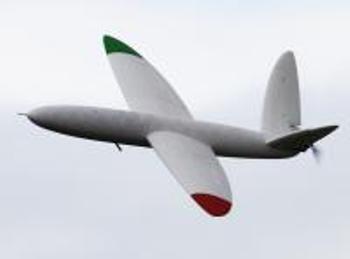Engineers at the University of Southampton have designed the Southampton University Laser Sintered Aircraft (SULSA), which is an unmanned air vehicle that has been built using printed structures.
 ULSA is the world's first "printed " aircraft
ULSA is the world's first "printed " aircraft
This is the first aircraft in the world whose integral control structures, wings, and access hatches have been printed using EOS EOSINT P730 nylon laser sintering machine. The sintering machine is capable of fabricating metal or plastic objects in layers. The parts of the aircraft were assembled by ‘snap fit’ methods and do not require any fasteners or tools. The aircraft can be assembled in just a few minutes. The aircraft is powered electrically and the maximum speed it can fly is 100 miles per hour. The wingspan is 2 meters and while the aircraft is in the cruise mode it operates silently. Dr. Matt Bennett, member of the team, has installed a small autopilot within the aircraft.
The technique of laser sintering helps in creating shapes and structures that would prove to be costly if made through conventional techniques. The laser process is much faster and since there are no fasteners required, no extra cost is incurred. Professor Andy Keane and Jim Scanlan from the Computational Engineering and Design Research group of the University had led the project. Professor Keane mentioned that laser sintering offers another design advantage which is an elliptical wing platform that provides drag benefits. Design and development of SULSA was funded by the EPSRC DECODE project. The University has been working on UAVs since 1990 and has now come forward to launch a Master Degree program on UAV design. This is the first time such a course has been launched, the duration of the course is one year and it covers land based, marine and pilotless UAVs.